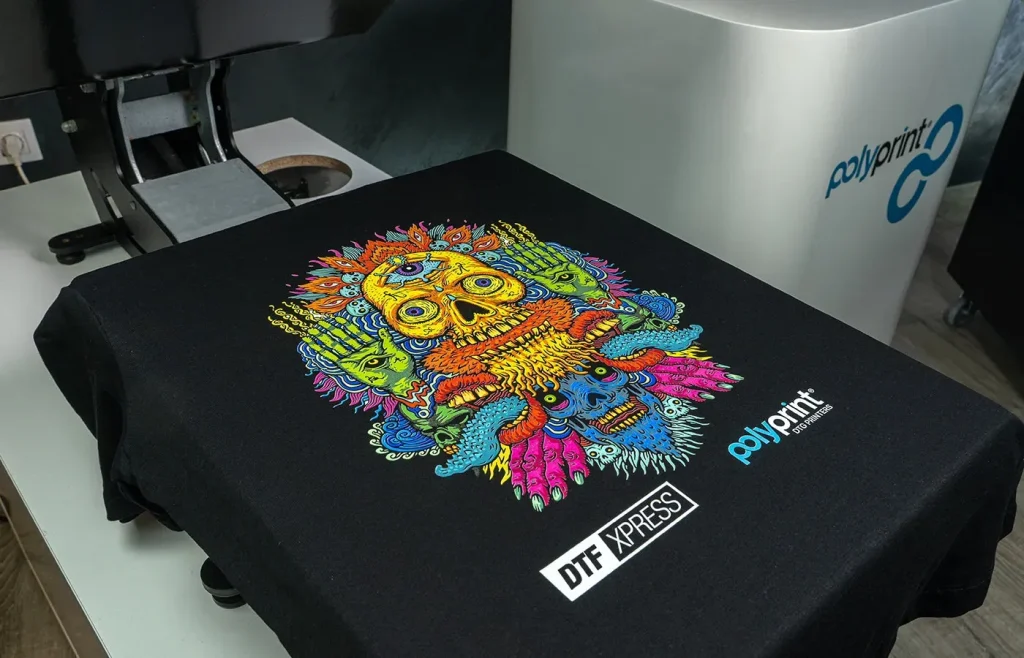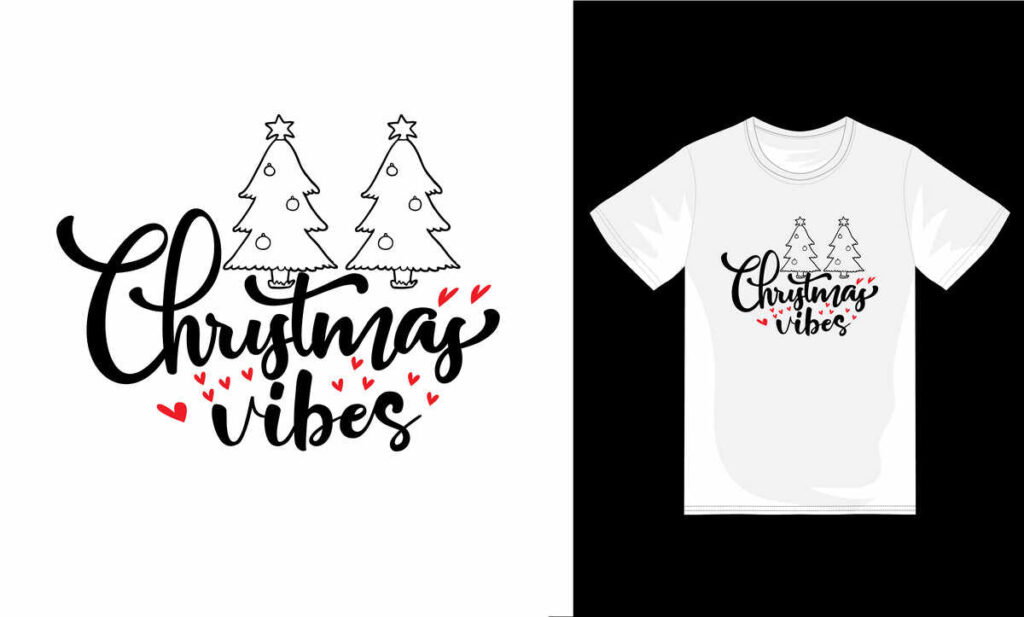In the evolving world of printing, DTF printing, also known as Direct-to-Film printing, has quickly established itself as a revolutionary technique for custom apparel creation. Designers and hobbyists alike are drawn to DTF printing for its simplicity and ability to produce vibrant, durable prints on a variety of fabrics without extensive pre-treatment. This method not only provides flexibility in design but also ensures high-quality results, making it a favored choice for beginners eager to explore their creativity. As we delve into this guide, we’ll share invaluable DTF printing tips, covering essential equipment, design preparation, and common pitfalls to avoid. Whether you’re just starting or looking to refine your skills, understanding DTF printing will set you on the right path toward mastering this exciting craft.
Direct-to-Film printing, commonly referred to as DTF printing, represents a significant advancement in fabric printing technology. This method allows artists and entrepreneurs to transfer intricate designs onto textiles with ease, facilitating the creation of custom garments for personal or commercial use. With the right DTF printing equipment and techniques, even those new to the craft can achieve professional-quality results. In this dynamic printing landscape, newcomers can benefit from beginner DTF printing guides that emphasize critical practices and the selection of high-quality materials. By harnessing DTF print design strategies, users can elevate their printed creations to new artistic heights.
What is DTF Printing?
DTF printing, or Direct-to-Film printing, is a modern printing technique that has gained popularity among both beginners and experienced printers. This method utilizes specialized ink to create vibrant designs on a film which can then be transferred onto various fabrics. One of the main advantages of DTF printing over other methods is its ease of use; it does not require complex pre-treatment processes, making it accessible for anyone looking to start printing custom apparel. This technology allows for excellent detail retention and vibrant colors, making it a go-to choice for producing high-quality graphics.
In essence, the DTF printing process involves printing your design onto a special film, applying an adhesive powder, and using heat to bond the design to the fabric. This method opens up opportunities for smaller businesses and home crafters to produce professional-quality prints without investing in expensive setups. Additionally, the ability to print on a wide array of materials without fear of distortion leads to greater creativity in the types of products one can create.
Essential Equipment for DTF Printing
To start your DTF printing journey, it is crucial to have the right equipment. The most vital piece of equipment is the DTF printer itself. Brands like Epson and Roland are highly recommended due to their reliability and compatibility with DTF materials. It’s important to invest in a printer specifically designed for DTF to ensure optimal results. Alongside a printer, a professional-grade heat press is essential for successfully transferring your designs onto fabric. The right heat press should allow for temperature and pressure adjustments, which are critical for different fabric types.
Also, consider the choice of DTF inks and films, as they significantly affect the quality of your output. When selecting inks, look for those that are formulated for DTF to ensure color vibrancy and durability. Additionally, choosing the right films that match your fabric type enhances adhesion and print longevity. Understanding the essential equipment will set the groundwork for a successful DTF printing venture, allowing you to produce stunning results with ease.
Preparing Your Designs for DTF Printing
Design preparation is a critical step in the DTF printing process. To achieve the best quality prints, start by using high-resolution images in your projects. Low-resolution graphics can lead to blurred or pixelated final products, negatively impacting the appeal of your printed designs. It is advisable to work with image editing software like Adobe Illustrator or Photoshop. These platforms provide tools that enable precise adjustments, ensuring your designs look perfect before they go to print.
Moreover, always ensure that your designs are created in the CMYK color mode, as this is the ideal format for print. RGB colors may look vivid on a digital display but often do not translate well to printed materials. Taking the time to fine-tune your designs before printing can save you from making common mistakes and help you achieve professional-grade results.
Common Mistakes to Avoid in DTF Printing
As a beginner in DTF printing, it is vital to be aware of common pitfalls that can hinder your success. One of the most prevalent mistakes is using incompatible materials. Not all films and inks pair well together, which can lead to poor adhesion and subpar print quality. Always research and ensure that the products you are selecting are suitable for DTF printing, as this will greatly enhance your results and reduce frustration.
Another common error is skipping the crucial step of performing test prints. Beginners may feel eager to jump straight into producing final products, but test prints allow you to identify any potential issues with your designs or settings before committing to a larger batch. Taking these initial precautions will ensure that your DTF printing journey starts smoothly, setting the stage for ongoing success.
Heat Pressing Techniques for Perfect Transfers
The heat pressing stage is where your designs come to life, and understanding the right techniques can significantly influence the quality of your final prints. For effective DTF printing, adjust your heat press to an optimal temperature, typically around 320°F, and apply even pressure for approximately 15-20 seconds. However, these settings may need to be modified depending on the type of fabric used, emphasizing the importance of adaptability in this process.
Additionally, consider pre-pressing your fabric before applying the design. This practice helps remove any moisture and can improve the adhesion of the printed design significantly. Once the transfer is complete, allow the film to cool before peeling the backing away to ensure that the design adheres properly. Mastering these heat pressing techniques will improve the overall durability and finish of your DTF prints.
Joining the DTF Printing Community for Support
As you venture into the world of DTF printing, connecting with the community can provide invaluable support and knowledge. Engaging in online forums or social media groups dedicated to DTF printing can introduce you to like-minded individuals who share their experiences and expertise. Whether it’s troubleshooting issues or sharing design ideas, these communities can be a rich resource to enhance your skills and broaden your understanding of DTF technology.
Moreover, many community members offer tutorials, tips, and valuable insights into current trends in DTF printing. Participating actively can also keep you informed about the latest products and techniques, ensuring that you stay ahead of the curve. By leveraging the collective wisdom of the DTF printing community, you can overcome common challenges and enhance your learning experience.
Frequently Asked Questions
What is DTF printing and how does it work?
DTF printing, or Direct-to-Film printing, is a method used to transfer high-quality images onto fabrics without extensive pre-treatment. This process involves using a specialized DTF printer to print designs onto a PET film, which is then coated with adhesive powder. The printed film is applied to the fabric using a heat press, allowing the design to bond directly, resulting in vibrant and durable prints.
What equipment do I need to start with DTF printing?
To begin your DTF printing journey, you will need essential equipment including a reliable DTF printer, such as brands like Epson or Roland, a quality heat press with adjustable settings, and high-quality DTF inks and films. Ensuring that each component is suited for DTF printing will enhance your overall results.
What are some DTF printing tips for beginners?
Beginners in DTF printing should focus on using high-resolution images to maintain print quality, work in CMYK color mode for better color accuracy, and conduct test prints to fine-tune settings. Additionally, applying adhesive powder immediately after printing and following proper heat pressing techniques are crucial for successful transfers.
How do I choose the right DTF film and ink?
Choosing the right DTF film and ink involves selecting high-quality materials that are compatible with your fabric type. It’s advisable to experiment with different brands and conduct test prints to assess how colors adhere during the heat pressing process, ensuring optimal durability and vibrancy in your prints.
What common mistakes should I avoid in DTF printing?
Common mistakes in DTF printing include using incompatible materials, rushing the setup process, and skipping test prints. Taking the time to verify material compatibility, carefully set up your printer and heat press, and performing test runs will significantly improve your printing outcomes.
Where can I find resources and support for DTF printing?
Resources for DTF printing include online forums, Reddit communities, and dedicated Facebook groups that focus on printing techniques and troubleshooting. Engaging with these communities can provide valuable insights, updates on trends, and support from fellow DTF printing enthusiasts, which is essential for both beginners and experienced printers.
| Key Point | Details |
|---|---|
| Introduction to DTF Printing | DTF printing offers a user-friendly method for transferring high-quality prints onto fabrics. |
| Understanding DTF Printing | Involves using high-quality inks and films for direct bonding without extensive pre-treatment. |
| Essential Equipment | A DTF printer, heat press, and high-quality inks/films are vital for starting. |
| Design Preparation | Use high-resolution images and professional design software in CMYK mode. |
| Film and Ink Selection | Experiment with different brands for durability and color vibrancy. |
| Printing Process | Ensure proper setup, load the film correctly, and apply adhesive powder immediately post-printing. |
| Heat Pressing Tips | Set heat press to appropriate temperature and time, pre-press fabric, and allow cooling before peeling. |
| Common Mistakes to Avoid | Check material compatibility, avoid rushing, and always perform test prints. |
| Resources and Community Support | Engage with communities for troubleshooting and tips, enhancing your learning experience. |
Summary
DTF printing presents a revolutionary step in custom apparel design, allowing creators and hobbyists alike to produce vibrant, high-quality prints with minimal fuss. As a beginner in DTF printing, it’s vital to understand the equipment needed, the elaborate printing processes, and the importance of material compatibility to safeguard against common pitfalls. By harnessing the power of community support and continually refining your design skills, you can navigate your way into the exciting world of DTF printing. This method not only simplifies the printing process but also opens doors to creative possibilities, marking a significant leap forward in the realm of fabric printing.



